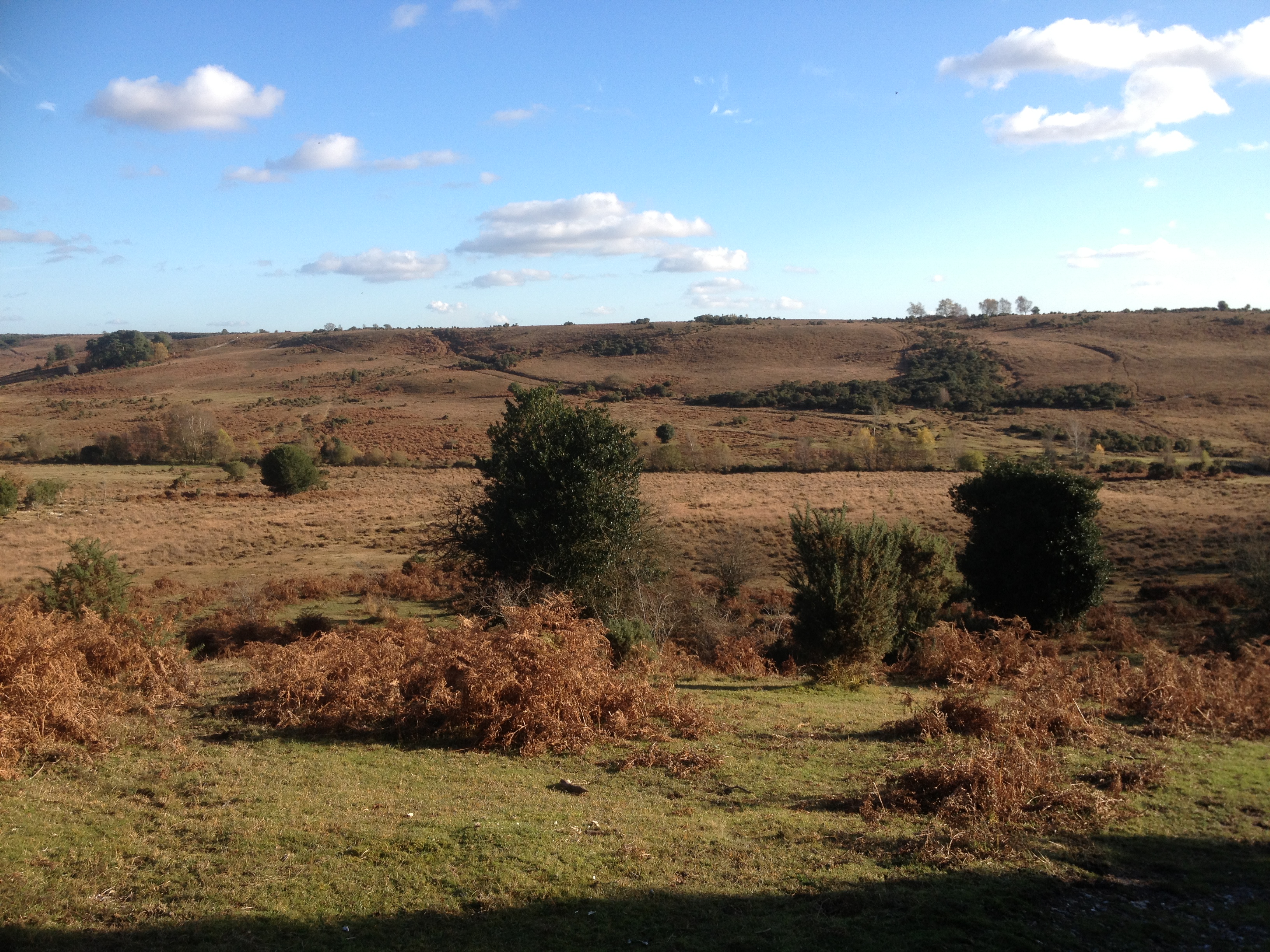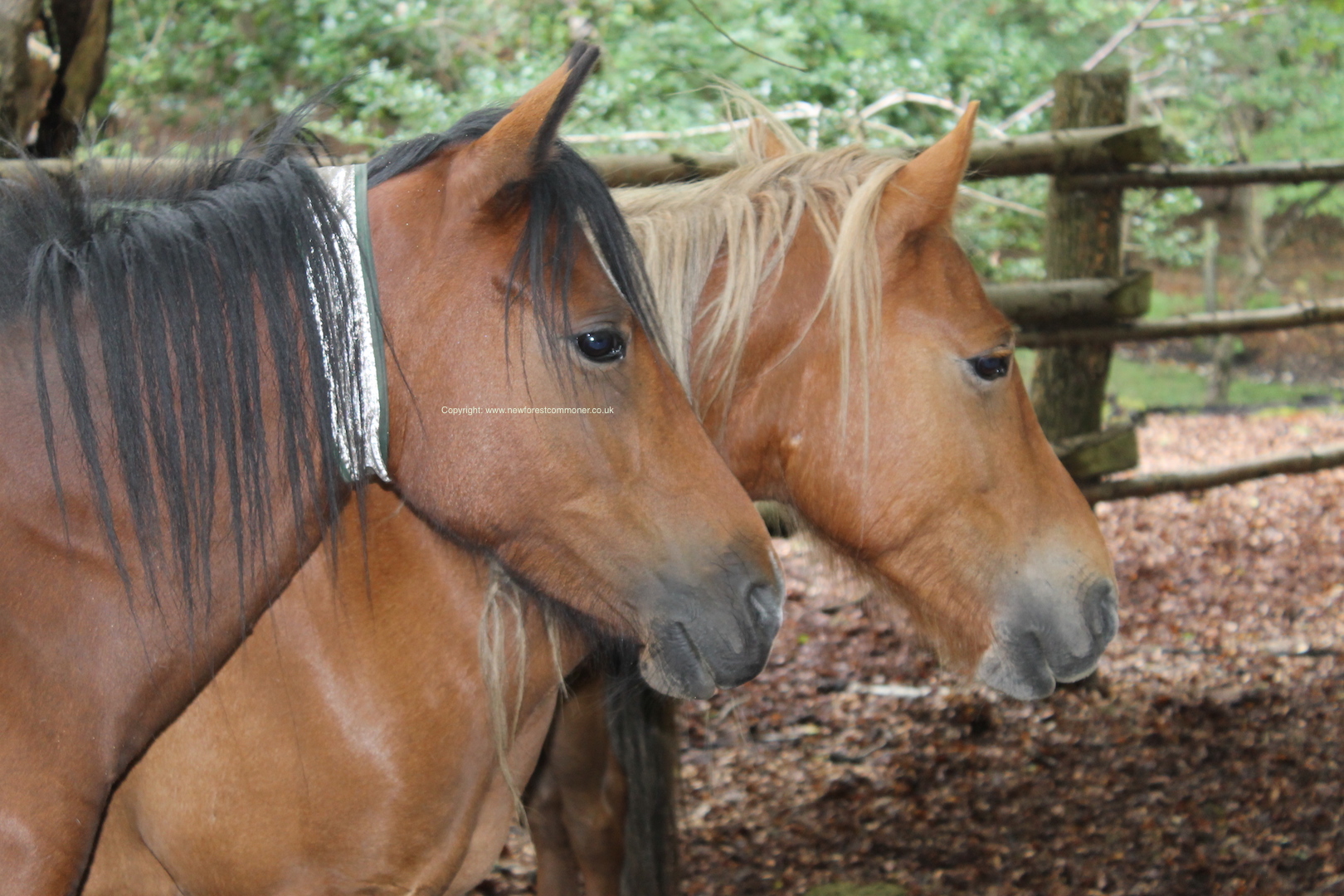
Finding a chestnut pony among autumn bracken is not an easy task.
The mild weather of late has meant that the trees seem to be holding on to their foliage, and subsequently treating visitors to the New Forest with displays of lingering autumn colour. Soon the strong winds will denude the trees of the little cover they have to leave them quite bare. While the shorter daylight hours reduce the opportunities for going out to check on the ponies, the exposed branches in the woods and copses mean that they become slightly easier to spot. However, one of my mares is the colour of autumn bracken, which is a deep reddy-chestnut. She is so well camouflaged at this time of year that, thinking I’ve seen her, I’ve gone off to inspect what turns out to be a clump of vegetation. Recently I found her with a small band of ponies grazing on a hillside. From a distance I knew there was something that didn’t look quite right. As I got closer to the pony I could see that her reflective-collar, instead of being in place around her neck, was under her jaw and across her head in front of her ears. She looked like John McEnroe wearing a headband! It seemed obvious that she been grazing in the middle of a gorse bush and, on pulling her head out, had managed to dislodge the collar. For a few moments I pondered what to do. If this were one of my ponies at home I could simply walk up to it and adjust the collar, but with semi-feral ponies it’s a different proposition. My options were, to leave the collar as it was, she would probably dislodge it by herself; approach her and pull the collar off myself; or, try to get the collar back into the correct position around her neck. The reflective-collars are a useful gadget to show up the ponies at night, particularly to drivers using the Forest roads. So, of all my options the last was the most favoured and, of course, the most difficult.
Watch the body language
I have handled this mare a little in the past and she has the sweetest temper but pulling the collar over her head was bound to cause a reaction and I didn’t want to panic her into defence mode, causing her to lash out at me. The other ponies lifted their heads to watch as I approached. She was curious about my attention; her ears were pricked and forward facing – a good sign. I stood at her shoulder and stroked her neck, with my hand creeping up towards her ears. She seemed content to let me continue and I managed to grasp the collar and pull it over her head. She jerked away with her ears lowered back – not a good sign. Unfortunately, I’d only managed to get the collar over one ear and would have to attempt the same manoeuvre on the other side. I stood patiently while she assessed the danger I posed. As soon as she went back to grazing and I approached her again. This time she was more wary of me. She still allowed me to approach her but was much more suspicious. Her body language was no longer relaxed. Even though she was a little apprehensive I managed to repeat the process of stroking quietly from her shoulder up to her ears and finally pulled the collar in place. The collar is generously elasticated, thankfully, but she was still unsettled by the sensation of the collar passing over her head. She pulled away, gave me a very nasty stare – almost a grimace – and walked indignantly away, followed by her friends.
UPDATE: My mare has managed to lose her collar and no longer has night-time florescent capability! (The collars are designed to come off, if the pony gets it caught on undergrowth or tree branches.)

The reflective-collars help the free-roaming New Forest ponies to be visible at night.


You must be logged in to post a comment.